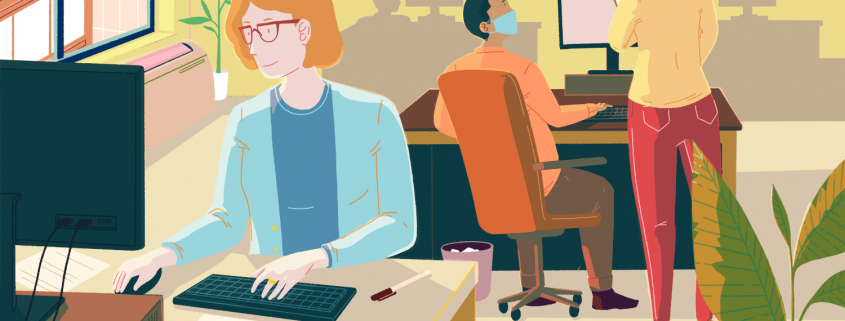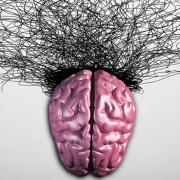Be Mindful When Returning to In-Person Work
After months of anticipation, returning to in-person work has been a disappointment for many employees. Navigating the COVID-19 pandemic and its aftermath is one of the biggest business challenges of our time. To keep operations going, most companies adopted new ways of working that left their offices, factories, and stores empty.
More than a year later, the world looks much different. As business comes surging back, management teams are responsible for leading their companies through these fast-moving changes. Boards of directors also play a role. They need to help management think critically about the development and execution of their return-to-work plans. This starts with understanding the in-person work challenges executives face in a post-pandemic world so they can ask the right questions and act as a sounding board.
In a recent Gartner survey revealed that 82% of company leaders will allow employees to work remotely some of the time, which means work life is going to look and feel very different than it did before. The pandemic has also increased fears of automation in many industries, leaving almost 40% of workers believing their jobs will be obsolete within five years. These changes, along with the challenges we continue to face at home, can be major sources of stress and anxiety.
Some employers, however, have realised that several of the pandemic’s workarounds are cost-efficient, and are considering making them permanent. There are many corporate leaders who still recognise that, in Microsoft CEO Satya Nadella’s words, “digital technology should not be a substitute for human connection.” But in what we might call a “Zoom forever” move, many other companies are contemplating radically downsizing traditional office spaces and making remote work permanent for large groups of employees.
The problem is, if millions of people never return to in-person work in a way that resembles the pre-pandemic world, it could have drastic consequences for our well-being. There’s nothing wrong with a partially remote situation—say, work-from-home Fridays or more flexible schedules. But going fully remote forever could exacerbate one of the worst happiness disasters of the pandemic.
Aggravation from commuting is no match for the misery of loneliness, which can lead to depression, substance abuse, sedentary behaviour, and relationship damage, among other ills. And it is simply undeniable that remote work usually leads to loneliness. In research conducted more than a decade before the pandemic about remote work among journalists, the organisational psychologist Lynn Holdsworth found that full-time telework increased loneliness over office work by 67%. Based on data from 2019, the 2020 State of Remote Work report issued by the social-media management firm Buffer showed that loneliness is the biggest struggle remote workers say they face, tied with problems of collaboration and communication.
Practicing mindfulness can help us navigate change and uncertainty with a bit more ease. It allows us to detach from what was, and instead accept what is. The mind prefers familiarity, certainty, and routine, so meditation makes us better equipped to adjust to whatever is shifting within and around us.
As we train our minds to be more comfortable with change, we can make the transition to post-pandemic life with less stress, fewer anxious thoughts, and more focus. Instead of needing to know how things will be, we become okay with not knowing. That’s how mindfulness helps us to become more resilient, so we can better handle whatever may come our way.
What makes change so scary?
We often tend to jump straight to discussing the topics of stress and day-to-day anxiety as reactions to change, rather than talking about change itself. What exactly makes change so difficult?
On a fundamental level, as humans, we are built to choose. We have a need to control. By making choices and exercising that control, we build routines and structure to create a sense of safety and stability in our lives. When things change, our sense of security can break down and we can experience a range of emotions, whether it’s an undercurrent of discomfort or actually feeling threatened, especially when change involves a radical shift, or introduces something we haven’t faced before.
Of course, what we don’t realise is that change is an inevitable part of life. If we pay attention, everything is changing all of the time, whether it’s external — businesses opening and closing, people coming and going, places evolving — or internal — our thoughts, emotions, physical sensations. But understanding that concept and embracing its reality are two different things.
It’s possibly why we often make change harder for ourselves by resisting it and staying focused on what we don’t want to happen, rather than understanding what is happening. We become too involved with the emotions around change, and that preoccupation is one way stress and anxiety can arise.
Why we might experience in-person work anxiety
Everyone experiences stress and general anxiety, albeit in different ways and with different levels of intensity. In a nutshell, stress is primarily a physiological response to an external threat, or a perceived threat. Anxiety arises in the mind as a reaction to the stress; usually triggered by a certain fear or the way we interpret stress, and it’s often oriented in the future. So when we encounter uncertainty — such as making the transition to in-person work after a pandemic — it’s normal to feel anxious as we try to make sense of a shifting landscape. Anxiety performs like a self-reinforcing cycle that kicks in due to a specific situation or event that leads to a worried or anxious thought — bringing feelings of fear, tension, or dread. Before we know it, we have bought into the entire storyline of anxiety that the mind has spun.
Typically, we then try to get rid of those feelings. Sometimes, we might even avoid the trigger point by trying to ignore it or distract ourselves. Other times, we might go the other way: seeking reassurance to try to control the situation. And while those control strategies sometimes work in the short term, we typically find that they don’t actually work to manage anxiety in the long run. The key here is that anxiety influences our thoughts, emotions, and behaviours in ways that will actually make it grow over time. And left unchecked, it can cause severe distress and impair our ability to function in daily life. One solution is to practice mindfulness to not only break the cycle of anxiety, but to transform our relationship with it.
Interrupting the cycle: how mindfulness can help
Mindfulness meditation can be a powerful tool for combating stress and helping people maintain focus once in the office, particularly as they navigate the transition back to the office from home. What makes it so effective is the element of attention training — bringing our attention to the present moment, and training the mind to be calm and engaged with each task at hand, without being easily distracted. Meditation activates an area in our brain called the prefrontal cortex, which is responsible for higher-level skills like critical thinking, decision making, planning and focus.
While meditation can enhance areas of the brain responsible for thoughtfully responding to events, it can also deactivate regions and processes responsible for impulsively reacting to events. For example, it has been shown to reduce the size of the amygdala, an area involved with the fight-or-flight center, which is also responsible for fear and stress. Through a regular and consistent mindfulness practice, we develop the ability to turn reactivity into a considered, intentional response — and this establishes the basis of resilience. The more aware we are of how the mind behaves, the less influenced we are by its storylines and patterns. This leads to an incredibly valuable shift in mindset when it comes to navigating the kind of uncertainties the past year has presented, and the kind of changes we face in returning to the office. There are a few practical suggestions that are recommended for anyone who’s experiencing elevated day-to-day anxiety and stress right now. They’re all about limiting the impact of anxiety triggers and catching anxious thoughts. The more we understand and recognise the qualities of the anxious mind, the better equipped we are to interrupt the anxiety cycle.
Given our current situation knowing that your colleagues or employees are best suited for this new scenario we find ourselves in. Finding the right talent, the best fit for the job and your organisation can be a very challenging task. It is now important to find out whether your managers or your team is well-equipped of working together from various locations. It requires deep knowledge of their personalities, strengths, weaknesses, interests, work style and other characteristics. Our technology and solutions will do the work for you, helping you discover if your people are resilient during times of hardship, if they are autonomous, if they are team players, without actual human contact. Given that our platform is cloud-based, everyone can use it from home as well. Humanity finds itself at a crossroad for various reasons now, why not help people discover and develop themselves from the comfort of their own homes?
Request a free demo:

Sources:
https://www.theatlantic.com/family/archive/2021/04/zoom-remote-work-loneliness-happiness/618473/
https://www.benefitspro.com/2021/10/28/return-to-in-person-work-has-been-disappointing-for-many-employees/
https://fortune.com/2021/08/02/office-return-covid-reopening-plan/











